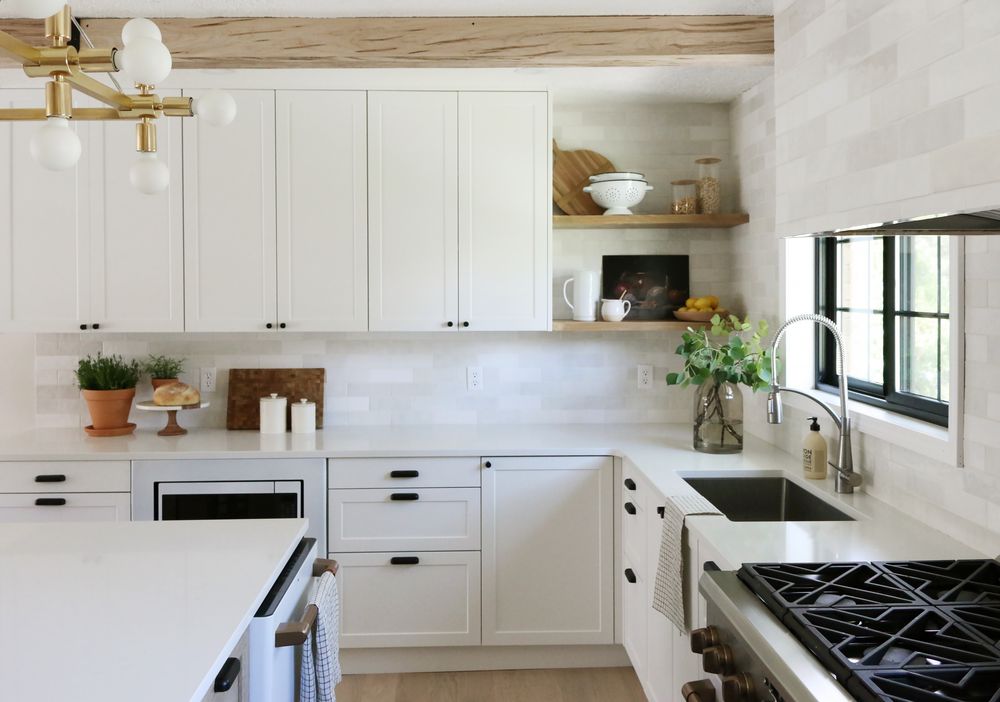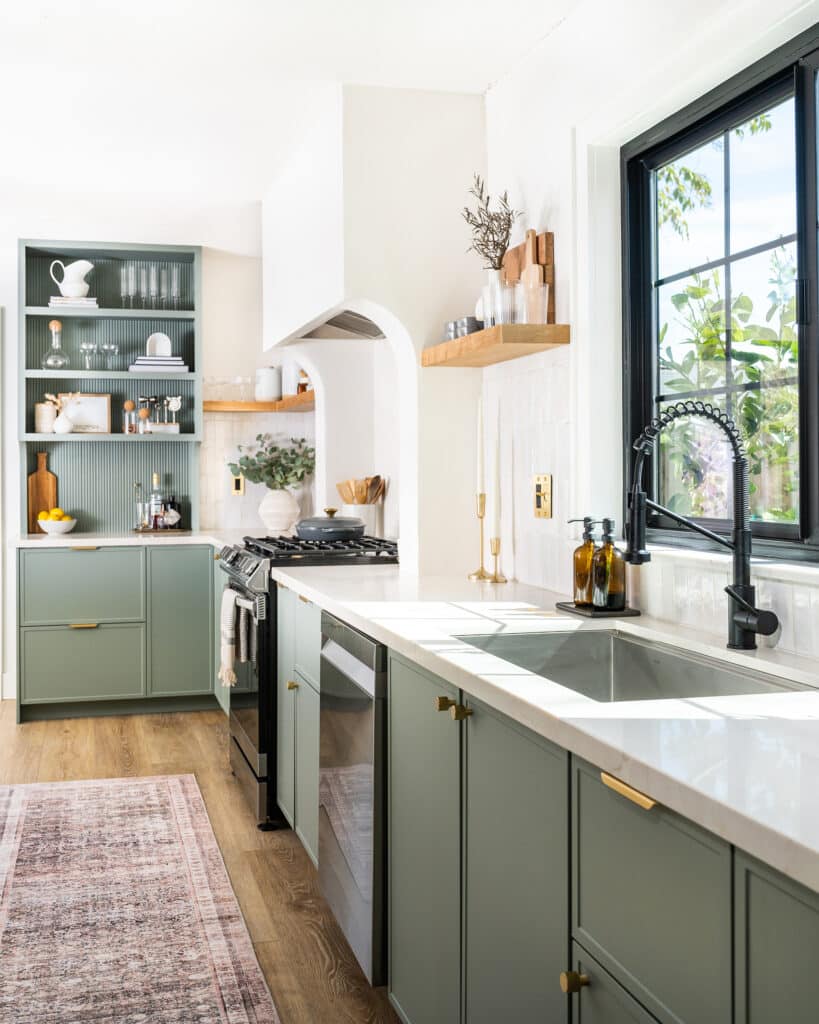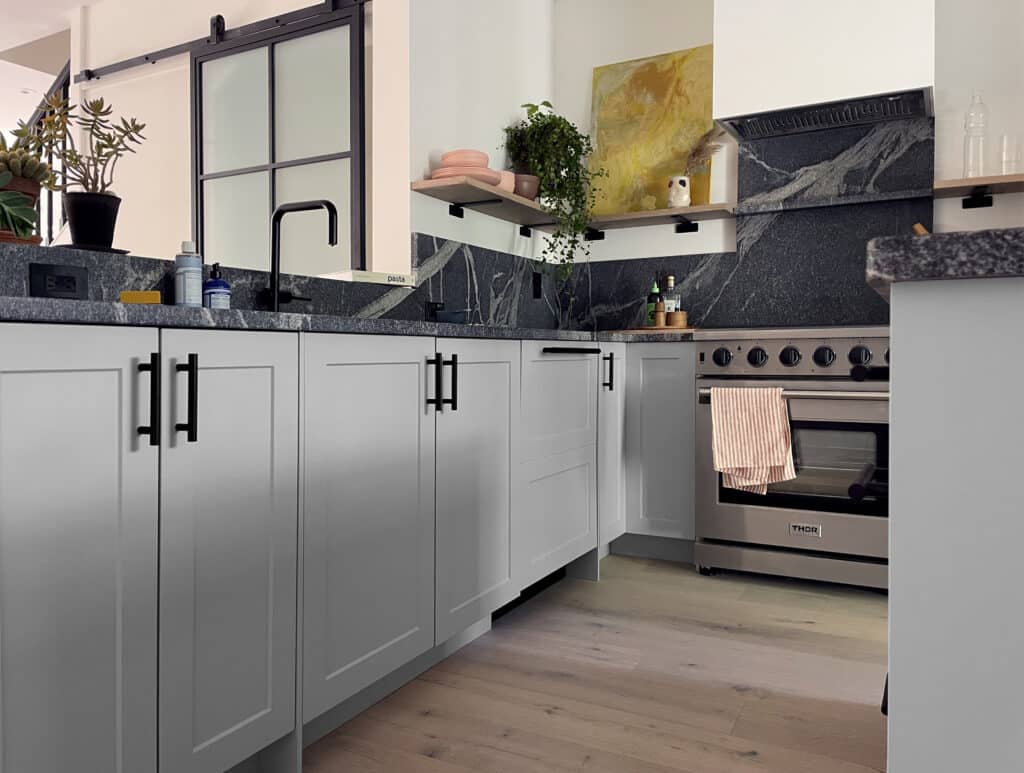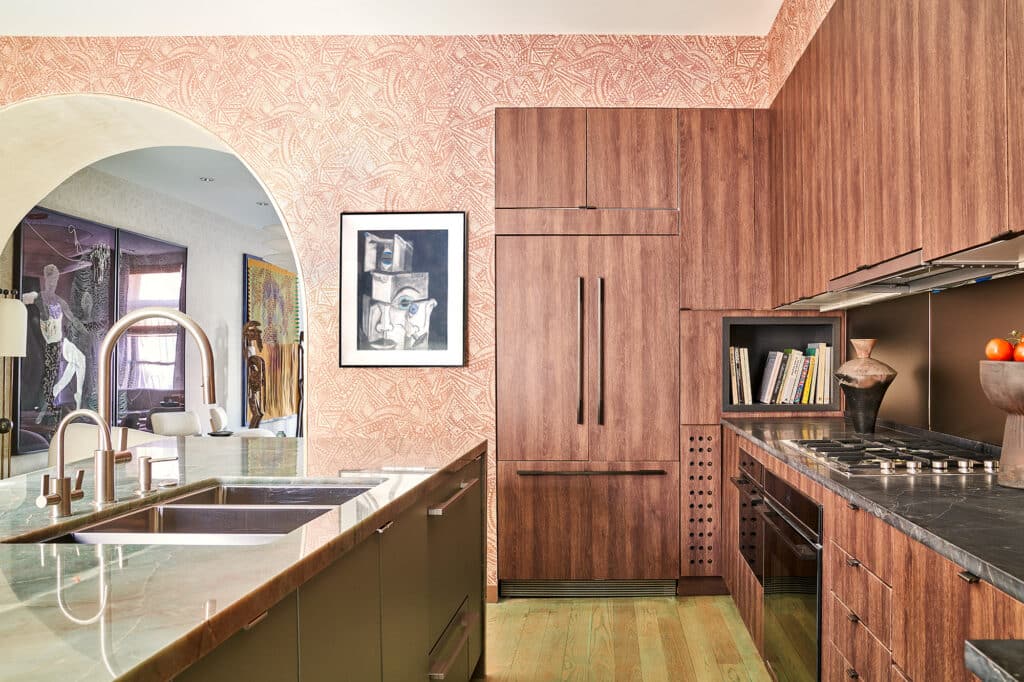Can’t you just see yourself in your kitchen, snipping bits of rosemary and basil from your windowsill herb garden and sprinkling them into a pot of spaghetti sauce?
It sounds like something Anne Hathaway or Reese Witherspoon would do in a Nancy Meyers movie while surrounded by wall-to-wall subway tile, double farmhouse sinks, and sun rays streaming in from every angle.
In reality, growing anything in the wintertime can be challenging. Fall and winter are the seasons in the Northern Hemisphere when there’s less natural light, and plants take a seasonal siesta.
But just because something is difficult, it doesn’t mean it’s impossible. For some pointers on indoor herb gardening, we reached out to a couple of our favorite greenery gurus, Chantal Gordon of The Horticult and Marcus Bridgewater, the plant-positivity influencer better known as Garden Marcus. They both assured us that if you’re determined and diligent about creating the right conditions in your home, you can make just about anything flourish in the wintertime.
Our Experts

Photography: Courtesy of Chantal Gordon

Photography: Dana Hammarstrom
Get the Light Right
Having adequate sunlight is crucial for happy herbs. “Putting them in a box in a south-facing window gives them a lot of light,” says Gordon, co-author of How to Window Box. If you don’t have southern exposure, consider investing in grow lamps like this floor option or this sleek LED bar that could easily be mounted under your kitchen cabinets. With the right setup, Bridgewater says a 4’x4’ space can grow just about any herb or vegetable indoors.
Create a Compatible Combo
While chives and rosemary play well on a plate, they can’t share the same window box, since they have different water needs. Gordon recommends researching how to care for your herbs and planting similar ones together. In her own Bloom Bungalow she designed with her business partner, Ryan Benoit, she grows Mediterranean herbs like rosemary, sage, and lavender together since they all have similarly low water needs. Chives need more water, and so does basil.
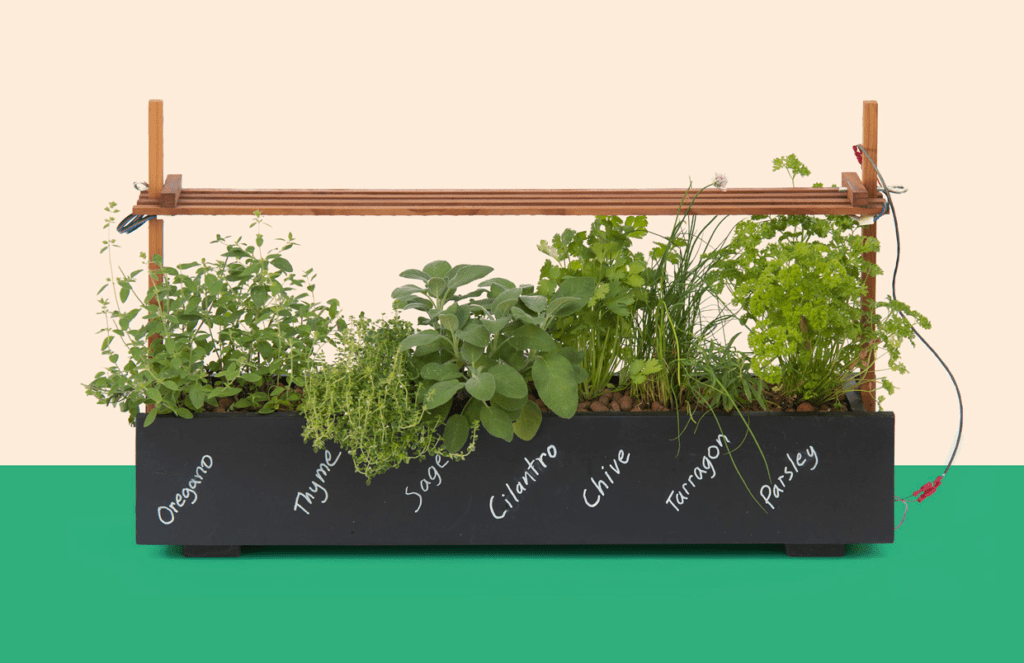
Find Balance With Your Routine
Did you know overwatering can be worse than underwatering? “I mist a lot more than I water,” says Bridgewater, who offers private consultations via Patreon. “I try not to get the soil too wet, and misting achieves this while also providing humidity.” Give your plants a drink only when the topsoil feels dry to touch. Make sure the pot has proper drainage holes. Or, if you tend to forget to tend to your green babies thanks to your busy schedule, consider a self-watering planter.
Master the Soil Mix
Herbs, like other potted plants, need moist soil to carry nourishment to the roots, which need airflow. Bridgewater says the key is a well-aerated soil mix that drains quickly. “You want the water to pass through the medium and not get bogged down, because that causes root rot,” Gordon says. Her solution is adding a handful of pumice to her organic potting mix.
Don’t Stress the Process
Bridgewater recently did an Instagram post on planting ginger root in a pot, and he showed off its progress during our Zoom interview. The rhizome’s little sprout was growing nice and slow and there’s not much to do to speed up this natural process. Gardening teaches us to enjoy the experience and let go of worrying about the outcome. Even if your purple basil dies, you’ll learn what to do differently next time. “I tell everybody: go get plants,” Bridgewater says. “Whether or not the plant survives, you’ll still be growing and learning. It’s a way to integrate the processes of nature into your own life.”





